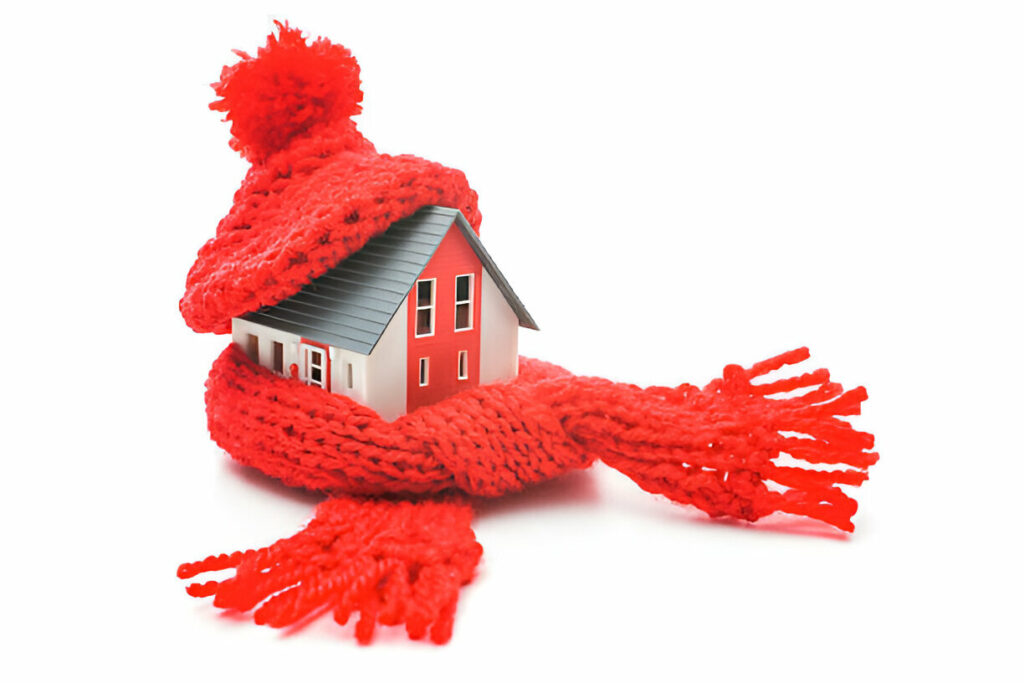To effectively winterize your home, follow these organized steps, prioritizing key areas to ensure safety, comfort, and protection from winter elements:
1. Heating System Maintenance
- Service the Heating System: Schedule an annual inspection and servicing of your furnace or boiler to ensure it operates efficiently and safely.
- Inspect Ducts: Check for leaks or blockages in heating ducts to ensure proper airflow.
- Seal Leaks: Insulate ducts and seal any gaps to prevent heat loss and improve energy efficiency.
2. Insulation and Draft Prevention
- Insulate Pipes: Use pipe insulation or heat tape to protect exposed water and heating pipes from freezing.
- Seal Windows and Doors: Check for drafts around windows and doors. Use weather stripping or caulking to seal gaps.
- Insulate Attic and Basement: Ensure these areas are well-insulated to maintain indoor temperatures and reduce energy costs.
3. Roof and Gutter Maintenance
- Inspect the Roof: Check for any damage or weak spots that could be exacerbated by heavy snow.
- Clean Gutters: Ensure gutters are clear of debris to prevent water damage and ice build-up.
- Remove Snow Safely: Use a lightweight snow rake to clear snow from the roof, avoiding dangerous roof climbs.
4. Chimney and Fireplace Safety
- Clean the Chimney: Schedule a professional chimney cleaning to prevent fire hazards and ensure proper ventilation.
- Check Fireplace: Inspect for any damage or wear and ensure it is functioning safely.
5. Plumbing Winterization
- Drain Outdoor Faucets: Disconnect hoses and drain water from outdoor faucets to prevent freezing.
- Insulate Pipes: Use pipe insulation or heat tape, especially for pipes in unheated areas.
- Know Emergency Procedures: Familiarize yourself with how to shut off water valves in case of pipe bursting.
6. Exterior Maintenance
- Seal Exterior Cracks: Inspect the exterior for any cracks or gaps and seal them to prevent water intrusion.
- Protect Plants: Cover sensitive plants or bring them indoors to protect against frost.
- Secure Outdoor Furniture: Store or cover outdoor furniture to protect it from winter weather.
7. Safety Measures
- Install Carbon Monoxide Detectors: Ensure your home has functional carbon monoxide detectors, especially near heating systems.
- Test Smoke Alarms: Ensure all smoke alarms are working to maintain fire safety.
- Inspect Foundations: Look for any cracks or weaknesses that could be affected by the freeze-thaw cycle.
8. Landscaping and Walkways
- Apply De-Icing Agents: Use salt or eco-friendly alternatives to prevent icy patches on walkways, but use sparingly to avoid damage.
- Plan Snow Removal: Have tools like a shovel and snow blower ready for clearing snow.
9. Interior Winter Preparation
- Stock Winter Essentials: Ensure you have flashlights, blankets, and emergency supplies on hand.
- Adjust Thermostats: Consider lowering the thermostat slightly and using programmable settings to save energy.
10. Professional Assistance
- Hire Experts When Needed: For tasks like chimney cleaning or HVAC servicing, consider professional help for safety and effectiveness.
Conclusion
By systematically addressing each area, from heating and insulation to roof maintenance and plant protection, you can ensure your home is well-prepared for the winter. Plan ahead, prioritize tasks based on urgency and budget, and don’t hesitate to seek professional assistance for complex or potentially dangerous tasks. This organized approach will help keep your home safe, comfortable, and damage-free throughout the winter months.


